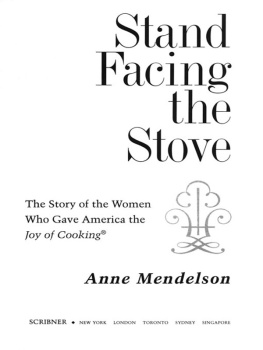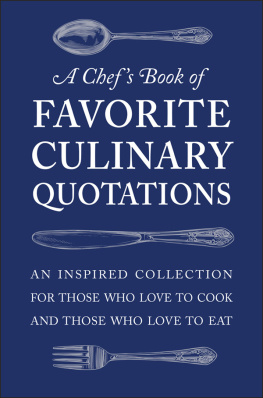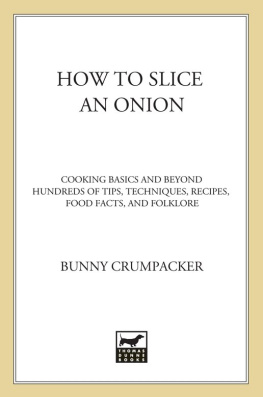Joy was just always there; my mother has one, I have one, every woman I know has one (and so do most of the men). Reading Mendelson's lively book has the same effect on the imagination as seeing pictures of your grandmother when she was young: you'd taken for granted that she had always been your grandmother, and suddenly you realize that she has a past, and you look at her in a whole new way. Stand Facing the Stove, which could so easily have turned out to be merely a curiosity, is, in addition to being an entertaining double biography of a mother and daughter, a detailed social history that opens up to offer a broad view of twentieth-century America. Mendelson is excellent on the social mores of the Midwest and ... witty, too.
The New Yorker
A wonderful story... Food historian Anne Mendelson tells it splen-didly.
Newsweek
It would doubtless have been a source of gratification to both Irma Rombauer and her daughter to think that the story of their record-breaking and much-beloved book could be used so effectively to trace a larger piece of history.
Oxford Companion to Food
A delightful social history of Americans' changing cooking and eating habits.
Publishers Weekly
A winning account of the life of one of America's standard cookbooks, with portraits of the mother and daughter who brought it into millions of homes.
Kirkus Reviews
An astonishing work of homage and research.
New York Newsday
Excellent... Anne Mendelson writes with a keen and delightful flair for language.
San Jose Mercury News
A cogent, insightful history of American cookery ... A lively and meticulously detailed account of one of the few bits of Americana to be regarded with almost biblical reverence.
San Francisco Chroni
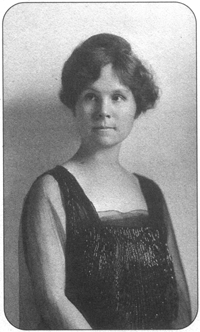
Irma in her thirties, probably between 1912 and 1915.
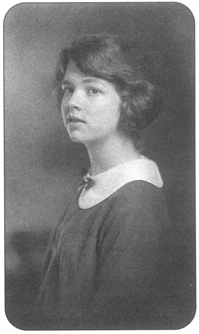
Marion at age eighteen, in 1921.

SCRIBNER
1230 Avenue of the Americas
New York, NY 10020
Copyright 1996, 2003 Anne Mendelson
All rights reserved, including the right of reproduction in whole or in part in any form.
Scribner and design are trademarks of Macmillan Library Reference USA, Inc., used under license by Simon & Schuster, the publisher of this work.
Photographs courtesy of Ethan Becker
Library of Congress Cataloging-in-Publication Data is available.
ISBN-13: 978-1-4165-8484-1
ISBN-10: 1-4165-8484-6
An extension of this copyright appears on the end of the Seleted Bibliography.
Visit us on the World Wide Web:
http://www.SimonSays.com
This book is dedicated to
Colleen Mohyde, Beth Crossman,
and the memory of Patty Eiser
CONTENTS
PREFACE
The oddities of this book reflect the fact that it took more than ten years to complete, not the year or so I naively expected when the Becker family gave me access to a vast hoard of documents and memorabilia stretching from the late nineteenth century to the time of Marion Beckers death in 1976. As I saw it, these papers would almost automatically group themselves into a complete story. Certainly they form the backbone of the book I did finally write, but there was nothing automatic about the process.
It was not long before I saw that the Becker-Rombauer papers added up to an extremely fragmentary, confused story. At times their very voluminousness obscured rather than revealed certain exceedingly bitter, tangled histories whose existence I had barely suspected. The most important of these was the long and acrimonious relationship of the Rombauers with their publisher, the Bobbs-Merrill Company.
From what remained of this once great firm I received no cooperation whatever. As a result, reconstructing lengthy wars in a manner that would be fair to both sides turned into a slow, uncertain, groping effort. Almost the only Bobbs-Merrill records I have seen pertaining to The Joy of Cooking are copies of letters actually sent to Irma Rombauer and Marion Becker (or their lawyers) and preserved in the family papers, and a fascinating trove of documents from a very few early years in the vexed author-publisher relationship, now owned by the Lilly Library of Indiana University at Bloomington. After that I was mostly confronted either with complete blanks or with obviously partial pictures of things as the Rombauer side saw them.
Rapidly running out of the wherewithal to continue a project that clearly had to be done with some regard for justice or not at all, I had to set it aside for long periods and get back to it at broken intervals. But the very difficulty of getting on with the story as an accurate chronological account eventually made me think about certain aspects of The Joy of Cooking more probingly than I might have if my path had been smoother. I realized that no study of any cookbook author or phase of modern food writing had ever dealt with a cookbook as a commercial publicationa property that must be acquired by a publisher, read in manuscript, edited, set in type, proofread, indexed, bound, and (when all of that has been done) marketed according to a more or less definite strategy. What is equally curious, no one has looked at successive editions of any cookbook with the detailed attention to changes in content that students of literary history commonly apply to other sorts of texts, and only a few investigators have tried to study the shifting culinary-cultural contexts out of which a particular cookbook springs.
My book, as it eventually shaped itself after many struggles with both documentation and overall concept, thus ended up as a peculiar composite some distance from the pair of straightforward life stories I had originally expected to write. The main narrative chronicles both the authors (and their families) lives and the efforts that brought each major edition of the cookbook into being. Two long pauses in the narrative proper are filled by the chapters Chronicles of Cookery, which discuss the place in culinary history occupied by the Joy of Cooking editions that are not now in print and are rarely or never seen by contemporary cooks.
Probably I have laid less emphasis than some readers might expect on a few aspects of the cookbooks history. I have carefully avoided calling it the best-selling American cookbook or anything of the kind, and have alluded to its sales record only as forming a general outline of success at different stages. The truth is that people who know something about books tend to be very leery of sales figures. There is no subject on which authors more bitterly distrust the word of publishers under the best of circumstances. As will be seen, the Bobbs-Merrill selling strategies were a terrible bone of contention with the authors from the moment of the books arrival at best-sellerdom in 1943. And no matter what sort of calculation is used, The Joy of Cooking surely has no claim to be the best-selling cookbook in American publishing history. As of 1996, the original terminus ad guem of my research, it was probably the best-selling trade cookbooki.e., a work issued through an ordinary publisher whose wares are primarily distributed to retail bookstores. But as regards copies sold, it then lagged well behind The Better Homes and Gardens Cook Book , which always drew on the distribution resources of the parent magazine, and The Betty Crocker Cookbook , which (until it was reissued in 2000 by a trade publisher as Betty Crockers Cookbook ) primarily depended on the research and marketing muscle of General Mills. Both, of course, were the work of committees. What was remarkable about Joy is that it was brought into being and continued, until 1997, by individuals.

